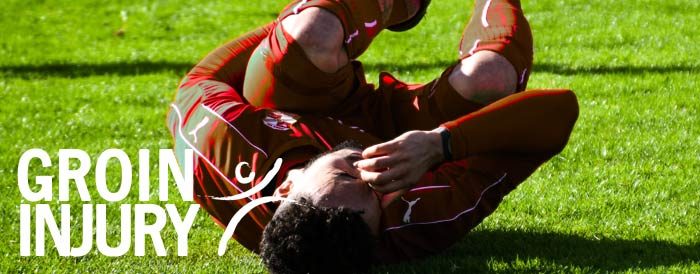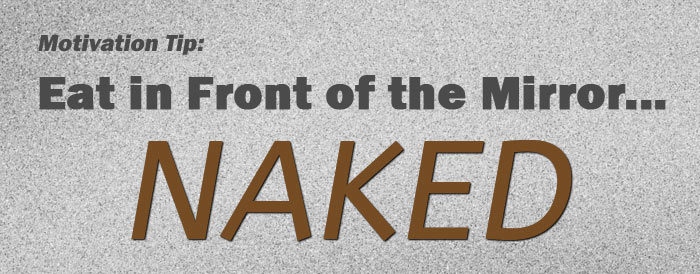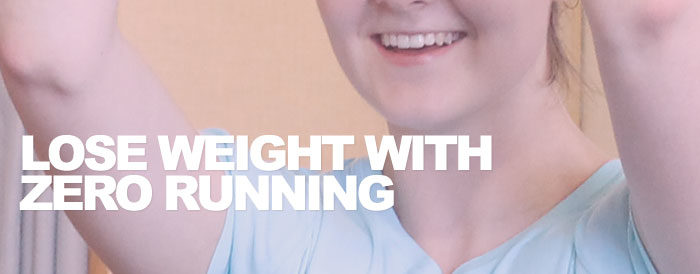jogging
Groin Injury
Groin injuries are a common injury amongst active people, as well as those unlucky enough to strain the area by falling, tripping, or getting their leg caught on something. It is usually characterized by pain along the inner thigh where the muscles are thought to have been over-stretched. It also has a reputation for being a “difficult” injury to recover from, although this reputation is somewhat undeserved. Sometimes the nature of the injury is incorrectly assumed from the beginning, which can lead to ineffective treatments and prolonged pain. Groin pain following a strain can result from several different injury mechanisms, each of which requires a different management approach.
Groin or inner thigh pain can be a manifestation of a hip joint problem. The hip is a ball and socket joint that is lined with cartilage and surrounded by other supportive soft tissue for protection. Sometimes when the groin is “strained”, the soft tissue can become pinched and cause pain. The resulting pain comes from compression of this tissue by normal hip movements. Usually, though, the hip can be “unlocked” by moving it in the proper direction, which can be found under the supervision of a well-trained physiotherapist, and relief of pain will quickly follow.
Another possibility is that the ligaments and tendons of the groin take the majority of the force rather than the muscles themselves. These tissues have notoriously poor blood supplies and so don’t receive the nutrients and support needed for good quality healing. Therefore, they can remain painful for weeks or even months if the proper intervention is not undertaken. However, they are quite responsive to tension or resistive forces, and with a specific exercise program, they can be remodeled slowly to decrease the pain and regain the strength. This does require discipline, as the changes will occur slowly over a number of weeks, but should ultimately result in recovery.
When a groin strain primarily affects the muscular tissues, which is what most people assume groin injuries to be, healing will usually proceed over a number of weeks, because of the aforementioned good blood supply. As long as the muscles are not over-stressed during this healing period, and movement and strength are gradually regained as the symptoms allow, the recovery will proceed uneventfully.
For all the different injury mechanisms listed above, once full movement and strength of the area have been attained, treatment will focus on recovering a level of function required by the person’s work or athletic activities. For example, a physiotherapist can guide a tennis player to safely progress and return to running, cutting, lateral movements, and lunging, all of which are necessary components of the sport.
In summary, the crux of the matter with groin injuries is to determine what kind of problem it is. To say you have a “groin injury” on its own does not say enough for a healthcare professional to be able to treat it effectively; they have to be able to understand it on a deeper level to direct the appropriate treatment. The physiotherapists at York Rehab possess the assessment skills necessary to diagnose such injuries and help you to recover as efficiently and effectively as possible.
March…The Perfect Time for Resolutions
Most would not argue with the statement that 80-90% of people who start a New Year’s resolution at the beginning of January are probably not going to make it to February. Most resolutions are meant to improve people’s lives and make them happier, so it’s sad that so many people give up on their dreams so prematurely. There are varying reasons that can explain the failure to keep resolutions but some of the more common ones are connected to setting too many goals at once, making your goals too general or making them too big. Whether you’ve consciously or unconsciously abandoned your resolutions after only a few weeks of trying, the good news is you don’t have to wait until next January to make another attempt. March is the perfect time to pick yourself up, dust off and give it another go. Here are a few things that can help you make your second shot at your desired life change more permanent.
First, Look at the Data
If you’ve failed at keeping up your January resolutions, you’ve now accumulated useful data. Between when you started and when you quit, you can likely pull some information that can show you what worked with your attempt and what didn’t. Taking a closer can help you to figure out what things you can do differently so that you don’t repeat failure a second time. For example, maybe your resolution was to start exercising regularly (5 days a week), but you were only able to exercise 3 evenings the first week, then 1 evening each of the next two weeks. That data would show evening exercise didn’t fit well with your schedule. So on a second attempt at the resolution, exercising first thing in the morning would be a better plan.
Figure out what’s REALLY Important to You
People sometimes decide on resolutions for superficial reasons and a deeper look can uncover that a particular resolution may not really matter to you. You might have a resolution to stop eating chocolate – but upon closer inspection you discover that what you really want to do is start eating healthier as a whole. Deciding to focus on only eliminating chocolate from your diet wouldn’t yield you the type of results you want because you could simply replace one less than ideal food choice with another.
Be Specific with Your Goal Setting
Break down your goal into specific parts so you know exactly what you need to do, and when you plan to do it. The wrong way to approach a resolution like incorporating more exercise into your routine would be to say “I’m going to exercise more this year”. When you’re that vague, it allows you the flexibility to interpret “…exercise more…” any way you want – i.e. I exercised twice this month, hopefully I’ll exercise more next month. It may not unfold exactly that way but you get the gist. Instead, be specific on how you are going to integrate exercise into your routine, i.e. I’m going to do yoga four times a week on Mon, Wed, Fri and Sat first thing in the morning. By listing specific steps, you’ll know when you’re not keeping up and that you might need to address something in order to stay on track with your goal. Choose the SMART method for goal setting:
Specific
Measurable
Achievable
Relevant
Time-based
Don’t Do Too Much at Once
There’s an endless list of things one would want to change about themselves but trying to make many changes at once is usually difficult. Start with one goal and once you have built some momentum with maintaining it, only then should you consider working on another goal at the same time.
Create Accountability for Yourself
Don’t keep your goals hidden, share what you want to accomplish with someone close to you. You’ll be more committed when you know someone is watching. And invite them to inquire about your progress. When you know someone is going to check up on you, it’s added incentive for you to keep up with your efforts so you have results to communicate when you’re asked: “How are things going?”
Measure and Celebrate
Keep track of your progress, whether by journaling or marking progress on a calendar. A visual record of your progress helps you maintain momentum because it allows you to see how much you’ve already done. And identify milestones so that you can have mini celebrations along the way. If you need to lose 20lbs, it’s much better to celebrate each time you lose 5 than waiting to celebrate only after you’ve lost the full 20.
And Finally, Lighten Up!
Making a change is not easy, especially if it’s a significant change. There will be moments of discomfort and times when you just won’t do what you are supposed to do. If you have a moment of weakness and stumble, don’t use that as an excuse to quit – no one is perfect, failure along the way is normal. Also, accept that your goal won’t always be exciting and fun to tackle and that you may often not want to complete your task(s). Most of the time you probably won’t feel like doing what you should be doing – recognize that motivation won’t always accompany you. Despite the absence of motivation, do what you need to do anyway. Focus on developing the simple habits that will get you going, i.e. if you need to get in a morning run – just focus on getting your shoes on, and once those laces are tied what follows will be automatic.
Is Chronic Pain something you live with forever? The Answer may surprise you.
Do you have a bum shoulder? A bad knee? Do you have a pain from an injury that has persisted for months or years? You may have talked to friends or co-workers about it and likely heard “Oh that’s chronic pain and it’s something you just live with” or “Well, what do you expect, you’re getting older”. Many people who develop such pains assume that because their injury was a long time ago, their pain is set in stone and there’s nothing you can do about it. Or, as you get older, it will be more difficult to get rid of it. Well, there is hope! These long-lasting pains don’t have to stay around forever; there are several courses of recovery that can take place depending on the nature of the original injury and the natural repair process that has taken place since.
In scenario 1, let’s assume you have pain from an old shoulder injury. It got better initially but just didn’t seem to fully heal, and now you’re left with some lingering pain. Normally what happens during the first few weeks of soft tissue healing (for example with muscle or ligament) is your body deposits scar tissue to rebuild the injured site. If we looked at the tissue fibres under a microscope at this point we would find them disorganized and unlike the original tissue where the fibres are lined up in parallel. If controlled stress (stretching and/or strengthening) is applied to the injured site at this stage, it would begin to remodel and look more like the original tissue. Depending on the severity of the original injury and assuming no other complications, after several more weeks of recovery and exercise the injured site can become pain-free and function well.
However, some people mistakenly believe that a tissue will heal fully on its own with time, or initially they misinterpret the pain that occurs with stressing the injured site and avoid it. In both cases, the remodelling process is not undertaken, and the scar tissue remains disorganized and tight, causing pain every time it is stressed. The good news is if you understand what is happening and are guided through the remodelling process with the assistance of a physiotherapist, you can make changes to this tissue and achieve a gradual recovery over several weeks or months. Typically this will involve an individualized and structured home exercise program – which can involve strengthening and stretching.
In scenario 2, let’s say you find yourself with pain from an old knee injury and no matter how much you try to remodel it following the principles above, the pain doesn’t go away. Sometimes what can happen at the time of injury is the resting position of the joint is disturbed so now it isn’t “hinging” properly anymore. Again, the positive here is this situation can be reversed quickly with the help of a physiotherapist who can identify the right movements to return it to its proper position. It’s like a floor rug being ruffled up in front of a door – when you try to open the door, it gets blocked by the rug. So what you have to do is find the right way to move the rug and then the door will open smoothly again. There are cases where pain that has persisted for years can respond to simple movements rapidly due to this problem.
The bottom line is this: just because you have had pain for months or years from an old injury that seems to be unchanging, it doesn’t mean you’re doomed to live with it. There’s hope! You can simply start by making an appointment with a physiotherapist. They’ll listen to you and do a thorough assessment to determine the nature of the problem, and design a recovery plan for you. Remember, you don’t need a doctor’s referral to book an appointment with a physiotherapist. As long as you’re willing to put in the effort to recover, the results will likely follow. Wouldn’t it be nice to leave behind that nagging pain you thought would be with you for the rest of your life?
Motivating Yourself to Exercise
You are looking to improve your overall health and know that regular exercise can help with that. So you sign up for a gym membership and have the class schedule on your fridge. But since taking the initial tour of the gym, you haven’t gone back. You just aren’t motivated to exercise. Don’t worry, you are not alone.
Finding the motivation to exercise can be tough, especially if you don’t like exercising. Here are some tips to help find your motivation:
Pack Your Gym Bag – Pack everything you need the night before and place your bag by the front door. Prepacking your bag means you don’t have to decide in the morning whether to exercise or not. Since your bag is packed you have no excuse not to exercise or talk yourself out of going.
Schedule Your Workouts – you put everything else in your calendar why not your workout? Plan your workouts a week ahead so that the time becomes blocked in your calendar. Consider these appointments sacred “me time” and try not to cancel them for other appointments.
Get a Workout Partner – when you know you are meeting someone for a workout, you are more likely to show up because you don’t want to let them down. Having a workout partner can motivate you to put more effort into training because someone is pushing you to do more.
Try Something Completely New – doing a brand new activity will force you to be fully engaged and help keep you motivated to exercise. Whether it’s yoga, fencing, rock climbing, or something else, having an instructor guiding you can make it seem more like a learning experience instead of exercise.
Leverage Your Lifestyle – try combining your workout with an established aspect of your life. Have kids? Go for family bike rides or help coach the kid’s sports team. Have a dog? Explore Thornton Bales Conservation Area or George Richardson Park for a scenic hike or go rollerblading with your pooch. Live in a condo or apartment? Try taking the stairs instead of the elevator down to your car in the morning.
Sign-Up for a Competition – whether it is a 5k run, climbing the CN Tower or participating in a Zumba-thon, the pending event date will help keep you motivated to exercise. When you know you have a reason to train, you are more likely to make yourself exercise so that you can finish the competition.
Find an Activity You Enjoy – when we say “activity” we mean something that will allow you to at least break a sweat (so scrap-booking doesn’t qualify). It’s never too late to learn a new sport – there are many adult leagues not only for intermediate and advanced participants but also for beginners. You can learn to play soccer or hockey. Or explore running or indoor rock climbing. If you find something you enjoy, it’ll be easier to lace up your shoes and get going.
Maintaining your motivation to exercise is sometimes challenging and may not always be related to your mind set. If you want to maintain a steady schedule of activity but find it hard due to recurring pain, it might be a good idea to see a physiotherapist.
4 Exercises to Help You Lose Weight with Zero Running
The average person believes running is the best exercises for losing weight. And while running provides a good workout, it may not be for everyone. For those that do not like running or find it difficult to do, there are other exercise options that can burn calories to help you lose weight.
So for your next workout, skip the treadmill and try:
1. Jumping Rope:
Did you know jumping rope uses more muscle groups than running, or that ten minutes of jumping rope burns the same amount of calories as running an eight-minute mile? Yup, this simple exercise is just as effective as running. Plus it challenges your endurance, balance, and coordination while adding definition to your calves and shoulders. Aim to do 10 – 20 minutes of jumping rope to reap these benefits.
2. Indoor Rock Climbing:
This fun activity combines cardiovascular exercise with resistance training and can burn up to 500 calories in just half an hour. An indoor climbing wall allows for proper skill development and confidence building since everyone climbs with the support of a harness. Thanks to rock climbing’s recent popularity, finding an indoor facility has never been easier. If you’re looking for a rock climbing option in Newmarket consider Of Rock and Chalk (note: York Rehab has no affiliation with this company nor are we endorsing it, ensure that you evaluate any fitness facility thoroughly before using to ensure the proper safety and maintenance practices are in place, qualified staff are available to assist you and that you feel comfortable in the space).
3. Rowing:
Rowing could be considered the perfect exercise because it works all the main muscles – thighs, back, abs and arms. While it is a lower impact workout compared to running, it still delivers a decent burn of up to 420 calories in half an hour. Best of all, the rowing machine at your gym will likely have no line up, so there’s no waiting to start your workout.
4. Burpees:
This classic calisthenic will get your heart rate up in a hurry while toning your arms, legs and core. Burpees are the perfect on-the-go exercise because no equipment is needed and can be done anywhere. Are you wondering how to do a burpee? No problem! Here’s how:
Stand with your feet hip-width apart, knees slightly bent. Swing both arms back and jump straight up into the air. Land softly on your toes and lower into a squat and place both hands on the floor. Jump your feet back into a plank position with your hands under your shoulders. Lower your chest down to perform a push-up. Jump both feet back in and return to starting position. Repeat. Continue to do as many reps as possible – burpees are hard work so don’t be discouraged if you can only manage a few. As your endurance develops work your way up to as many as you can in a minute.
Try including one of these activities in your existing fitness routine to keep your workouts interesting and challenge your body so you continue to lose weight. Haven’t exercised in a while or never tried these exercises? Remember to check with a physiotherapist or physician before beginning a new exercise routine.






